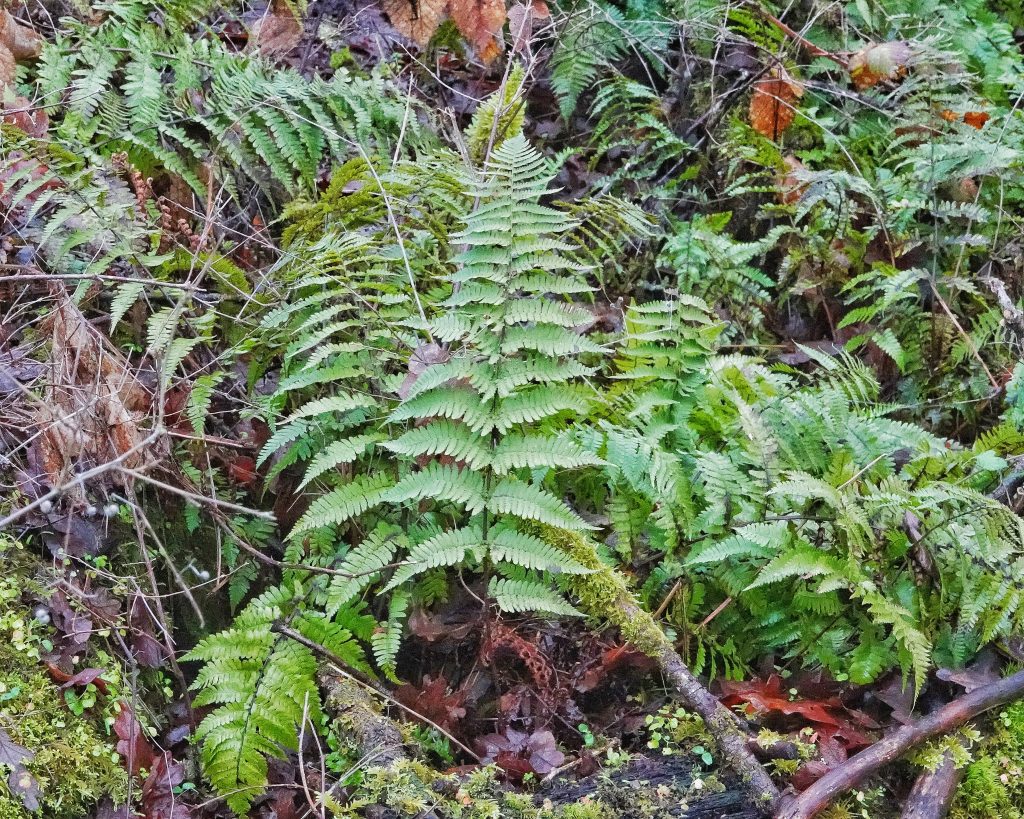
Thanks to a tip from Caroline Skinner, a regular reader of these profiles, I was able to find my first Dryopteris arguta (Coastal Wood Fern) last Monday at Nob Hill Nature Park in St. Helens, Oregon. They are superficially similar to several other ferns, and I’ve probably walked by some without noticing them, so it was very nice to know that they were there for the finding. I spotted the first one within yards of where I’d parked, and found at least a dozen more as we strolled the 6.6 acre park.
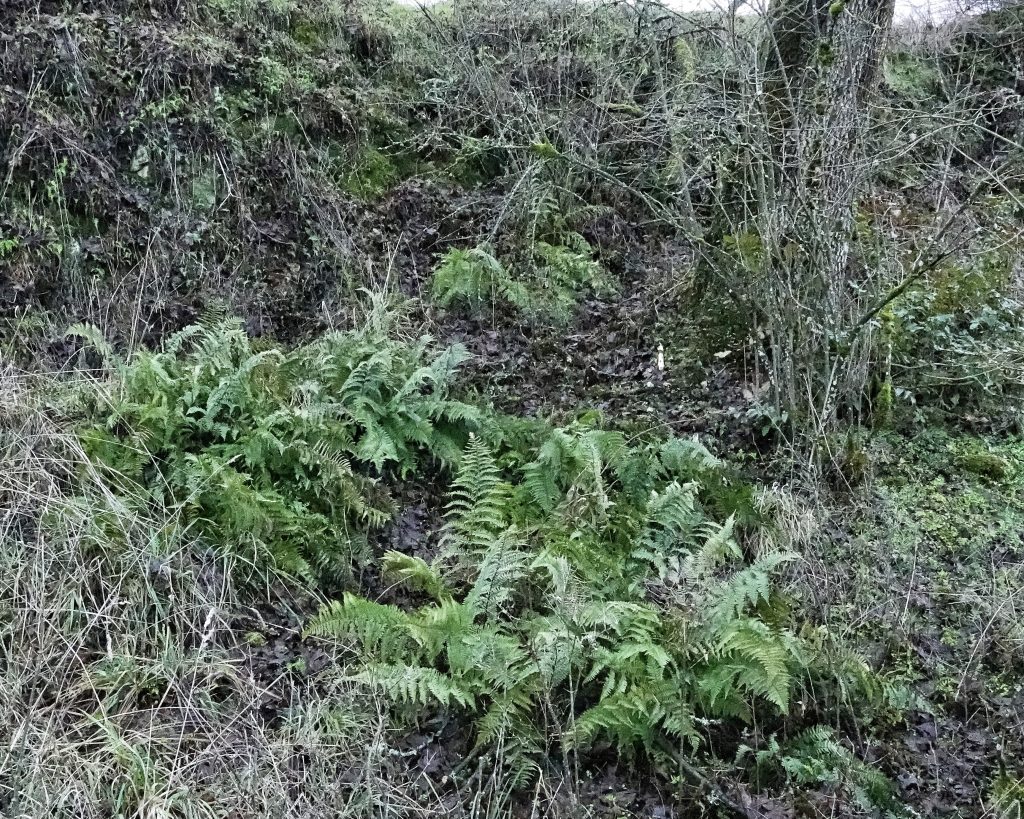
One of the first things I noticed about these ferns, and a trait that wasn’t mentioned in the books (though I did find it confirmed after the fact by some Internet resources) I consulted before heading out to look for them, is that many of the pinnae are twisted upwards, like slightly open louvers, giving them a somewhat ruffled look. Usually it was the basal part of the pinnae that was elevated, but sometimes it was the anterior portion. By itself this twisting of pinnae is not sufficient for a positive identification, but it is unusual, noticeable, and quite attractive, and is a useful clue that possibly a given fern is not a lady fern, or one of the other Dryopteris.
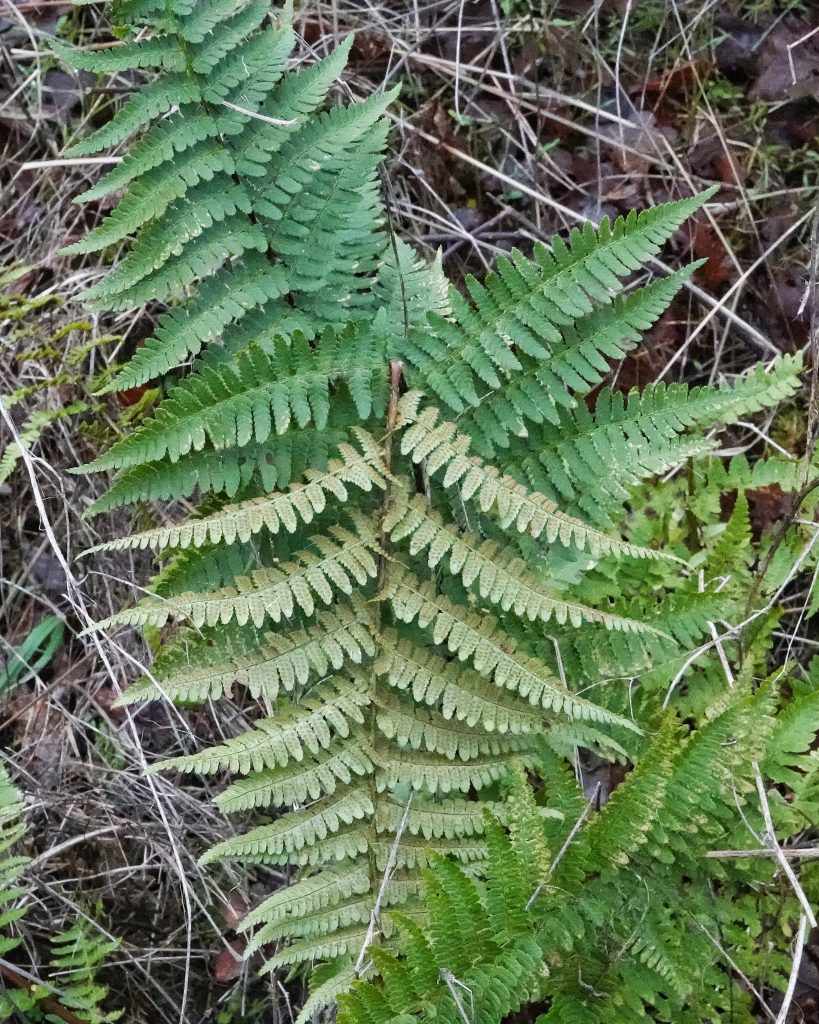
The only use as a food source by indigenous peoples that I could find for coastal wood fern was that the rhizomes were gathered in spring and eaten, but they also made a decoction of the roots which was used to treat vomiting and internal bleeding. The leaves were used to clean eels and other meats, and as a barrier against flies, and an infusion of the fronds was used as a hair wash. They also used the spores to make designs on their hands.
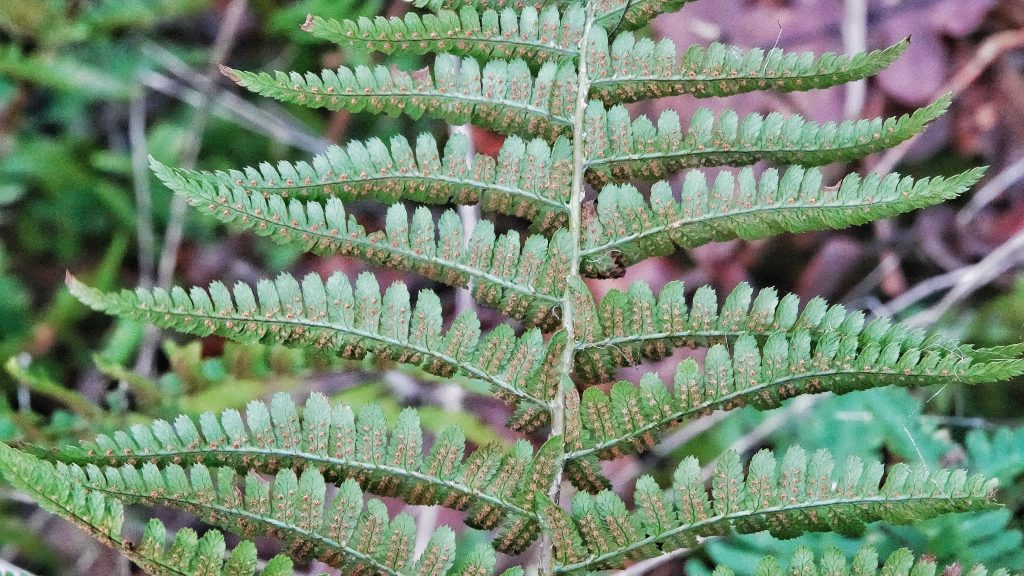
Dryopteris arguta is often found in rocky, oak woodlands like the ones at Nob Hill, and now that I know what to look for it’ll be interesting to see how often I have walked by them in those habitats. As I found out when I sent some of these photos to my fern expert (David Wagner, who is also an all around bryophyte expert) for confirmation, these beautiful ferns have recently come under attack by the invasive leafhopper Eupteryx filicum. These European leafhoppers are fern specialists that first showed up in BC around 2014, and David, who may have found the first ones in Oregon and has become familiar with this species, noticed the tell tale bleaching around the edges of the pinnules that is often a sign of feeding by these leafhoppers. Next spring I’ll try to confirm the presence of them in the Nob Hill location.
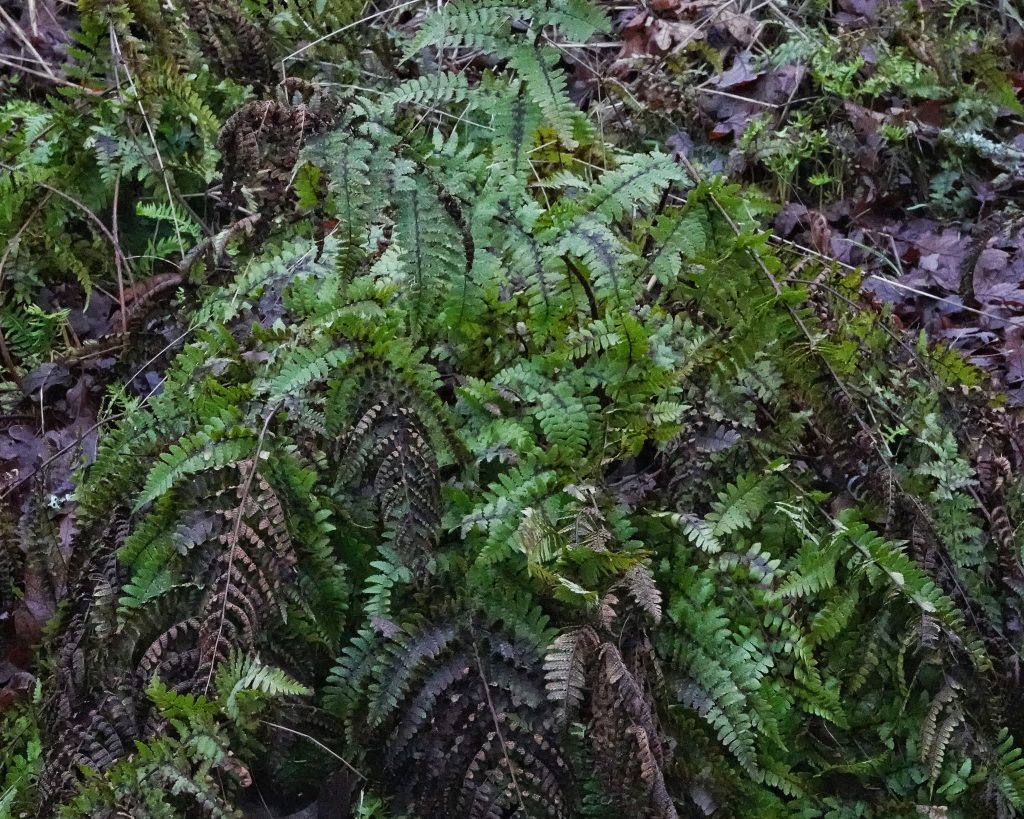
Description-Medium sized (fronds may be up to 2’ long) evergreen fern that is twice pinnate; pinnae are longest about a third of the way up, though only slightly narrower towards the base; pinnules are all basically the same size on each pinnae, are sessile, subsessile, or with very tiny petiole, and are sharply toothed, often with bristles at the points, and the veins extend to the point of the teeth; sori are more or less centered on each side of the midvein; often has pinnae slightly twisted upwards, like partly opened louvers.
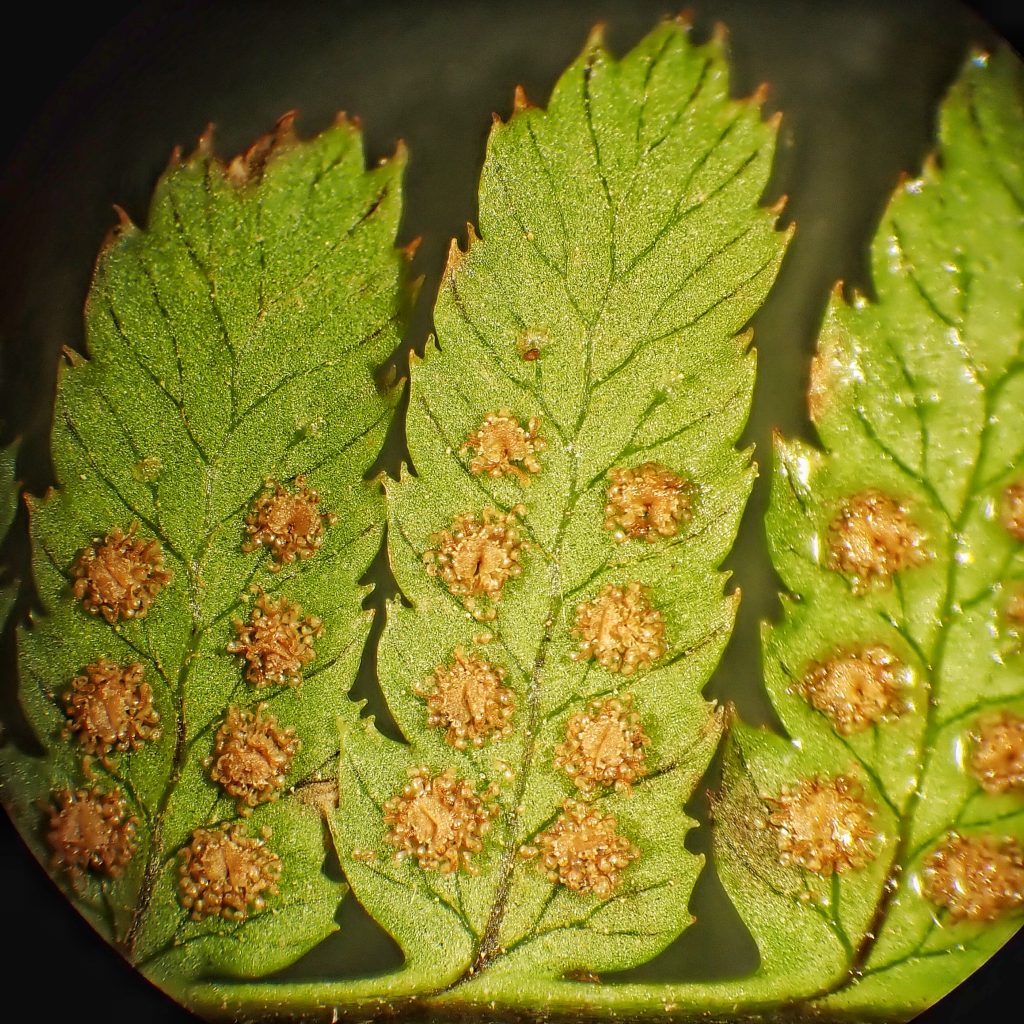
Similar species–Dryopteris filix-mas has blunt to rounded teeth on pinnules that lack bristles, and hair-like, linear scales on the pinnae; on Dryopteris expansa the top pinnules nearest the stalk on the lowest pinnae are much shorter than the pinnules below; Athyrium filix-femina (Lady Fern) has its longest pinnae in the middle of the fronds, and they get obviously and progressively shorter toward the base and apex; Bracken ferns are almost always thrice pinnate.
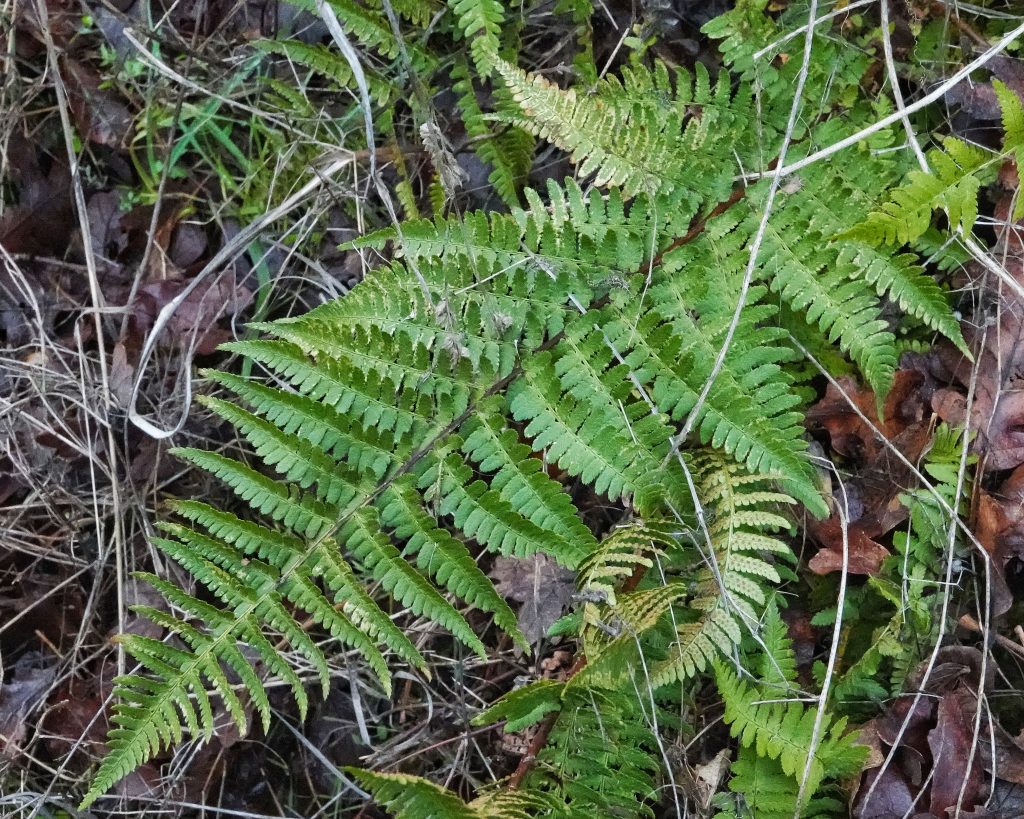
Habitat-Rocky, shaded or open woodlands, up to 4,000’ elevation; often in association with oaks, and less commonly with Doug-firs.
Range-Sw BC to Baja California, with a disjunct population in Arizona; almost exclusively found west of the Cascade Crest in our region, though their is some eastward penetration near the Columbia River Gorge.
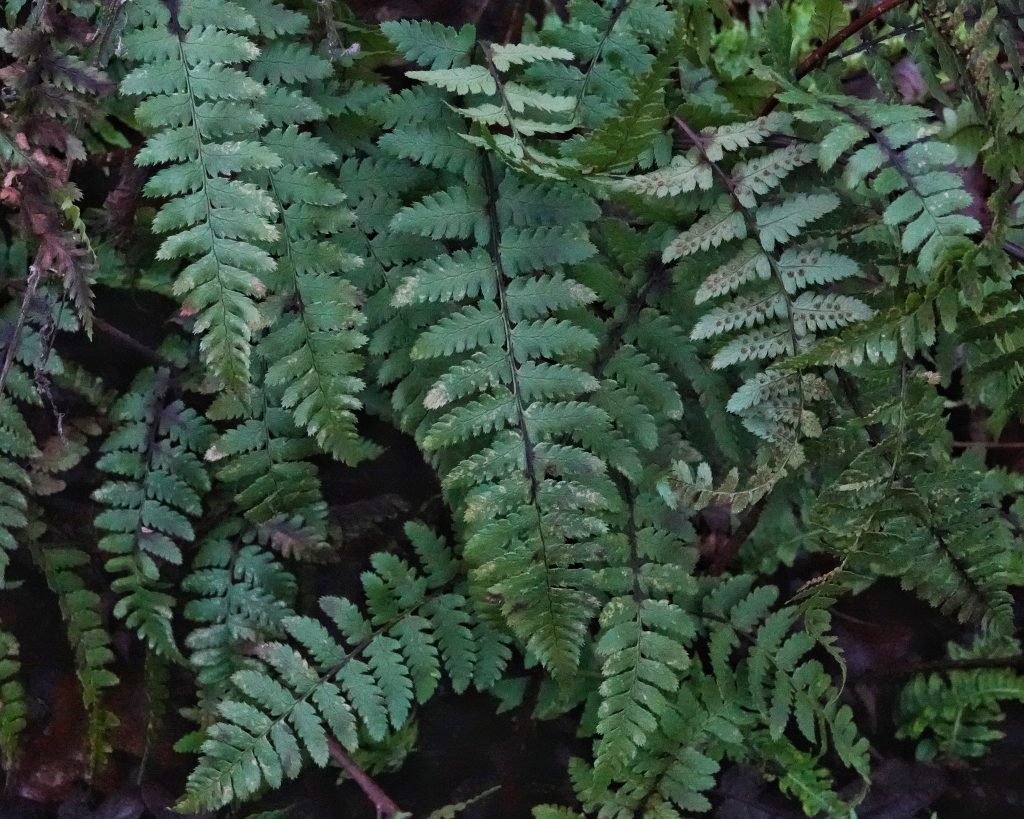
Reproductive timing– I can find no definitive information on reproductive timing, but the ones I encountered in January were mostly done sporulating.
Eaten by-Larval host for the Tortricid moth Argyrotaenia franciscana; the introduced leafhopper Eupteryx filicum; it seems likely that thrips, aphids, nematodes, and various scale insects feed on these ferns, but I can find no information on that that is specific to this species.
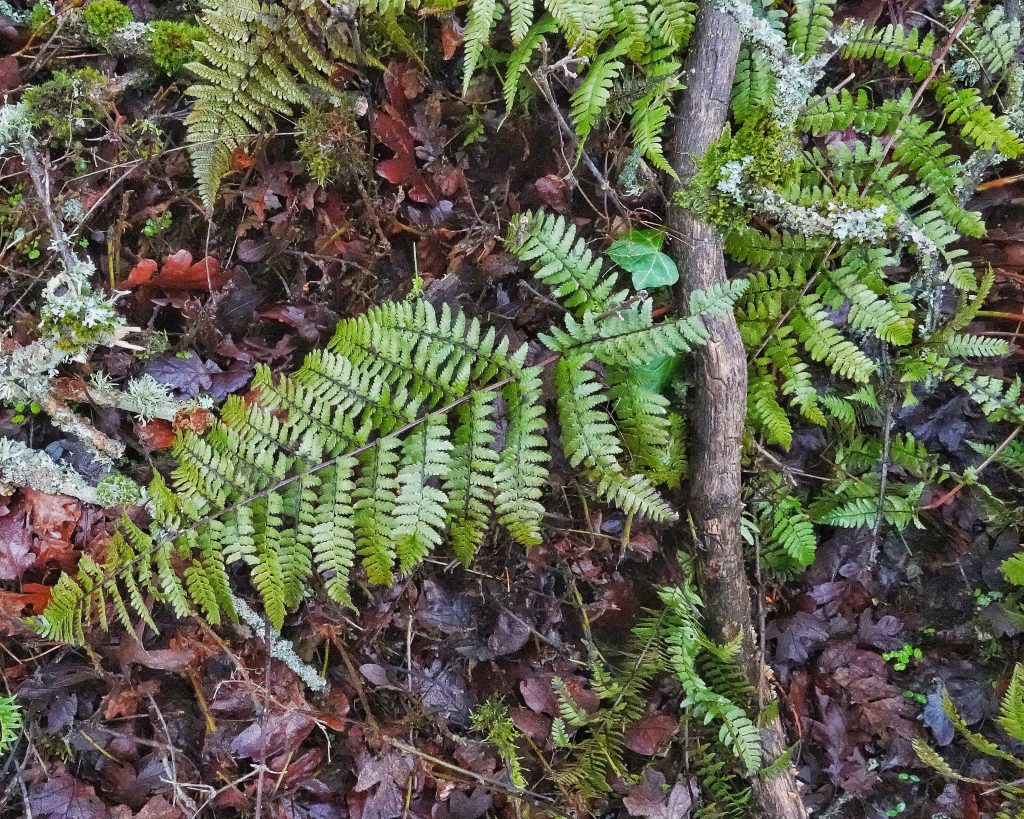
Etymology of names-Dryopteris is from the Greek words for ‘oak’ and ‘fern’, which references the fact that they are commonly found in woodlands and forests, which is where they get their common name of wood ferns. The specific epithet arguta is from the Latin word for ‘sharp toothed’, referring to the sharp toothed margins of the pinnules.
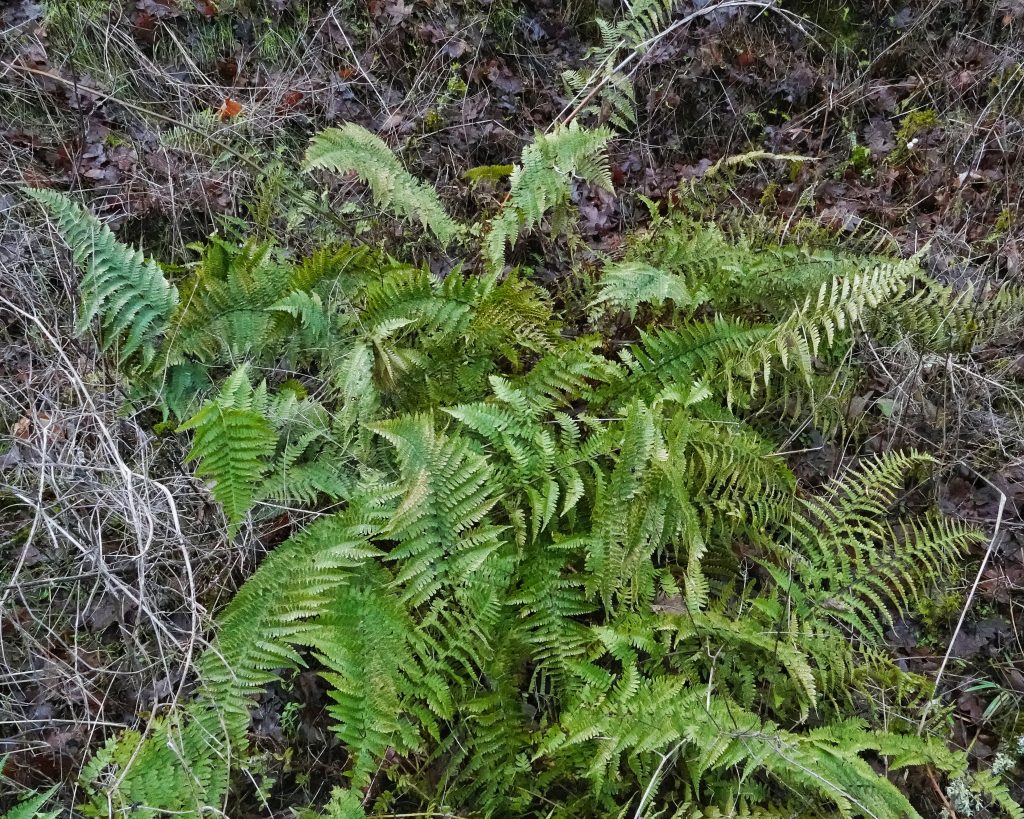
Coastal Wood Fern, Dryopteris arguta
BRIT – Native American Ethnobotany Database
https://www.gardenia.net/plant/dryopteris-arguta
https://nph.onlinelibrary.wiley.com/doi/pdfdirect/10.1111/nph.13770
Athyrium filix-femina (Lady Fern) – 10,000 Things of the Pacific Northwest
Dryopteris expansa – 10,000 Things of the Pacific Northwest
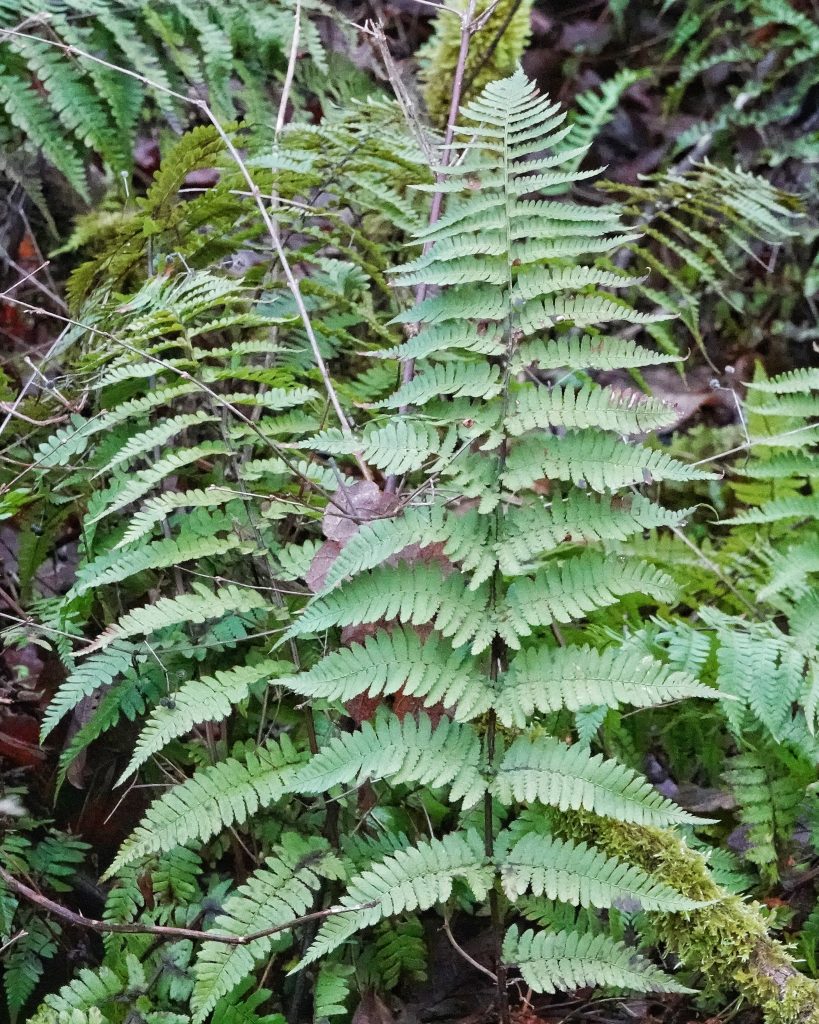
Thank you for sharing info about this less-common fern.
Glad to finally get it done for you, Caroline! Thanks for the tip!
Okay, now I’m going to have to keep my eyes peeled because I’ve probably been walking past them too!